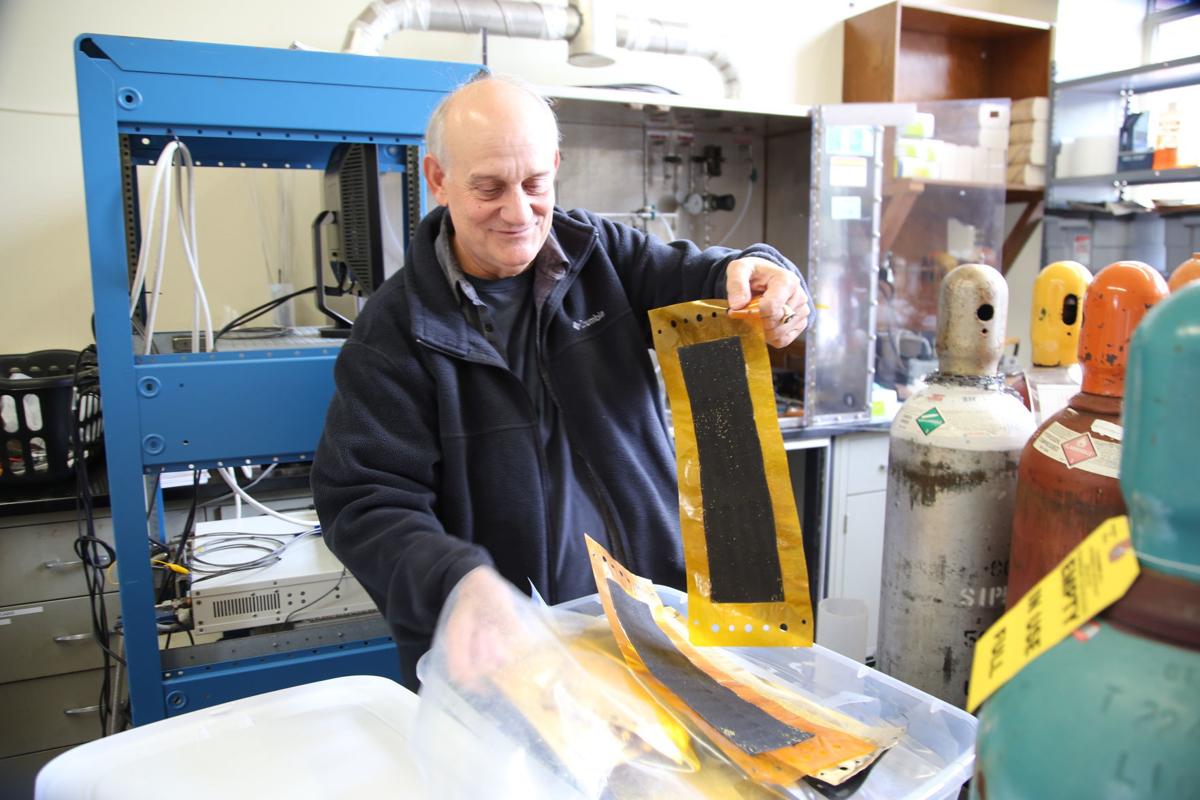Hydrogen fuel cells have been in limited commercial use for decades, but their wide adoption has been hampered by high costs and technical issues.
Now a University of Arizona professor is working to commercialize a new type of polymer electrolyte fuel cell that can operate at high temperature without the need for water.
UA associate engineering professor Dominic Gervasio is working with Tech Launch Arizona, the UA’s technology commercialization arm, to patent and potentially license the technology.
Fuel cells generate electricity via a chemical reaction using hydrogen. They consist of plates of various materials that create the reaction.
The new fuel-cell technology could be used in autos, or for remote or emergency power generation, but one of the chief beneficiaries is expected be the aircraft industry, where limiting size and weight is crucial, Gervasio said.
“The people in the aerospace industry want these fuel cells to improve the efficiency of their aircraft,” said Gervasio.
Gervasio — whose other research has led to two local startup companies commercializing corrosion-control and metals extraction technologies — said he’s working with some local companies to develop the fuel-cell technology, while courting further support from government agencies and the private sector.
Bob Sleeper, Tech Launch Arizona licensing manager for the UA College of Engineering and a former aerospace engineer, said Gervasio’s fuel-cell design could be developed into auxiliary power units for aircraft.
Aircraft auxiliary power units, or APUs, typically use small gas turbines that burn jet fuel to generate power while on the ground or during in-air emergencies, said Sleeper, who before joining the UA spent 26 years as an engineer and intellectual-property licensing manager for Honeywell, the largest maker of APUs in the world.
Sleeper said some major aircraft suppliers are interested in the technology, though he declined to name them because of confidentiality concerns.
Gervasio, who came to the UA in 2009 from Arizona State University, has been working to advance fuel-cell technology for years under research grants from the U.S. Department of Energy and the U.S. Army, with support from the Oak Ridge National Laboratory.
Much of his work has focused on finding the optimal materials for the proton-exchange membranes in fuel cells, which allow protons to pass through but stop electrons, creating an electrical current.
Gervasio said that the new fuel cell’s waterless design — which also makes the cells impervious to the effects of unwanted moisture — means the cells can be smaller and lighter.
“This fuel cell neither needs water nor is harmed by water,” he said, noting that most cell designs that don’t use water also are harmed by its presence.
The ability of the fuel cell to operate efficiently at very high temperatures – in the range of 400 degrees Fahrenheit – means cooling components can also be smaller, he said.
Gervasio said the polymer membrane materials he advanced at ASU were never fully developed, and he set the work aside for awhile after coming to the UA.
Restarting his research in earnest, Gervasio built on his past work and that of other researchers to find the most promising membrane material he’s seen so far.
“The key point is, nobody has had a good set of materials, but we’re working on that now,” he said. “My experience led me to believe we never had what we needed until now.”
Gervasio said a senior scientist at Los Alamos National Laboratory, Yu Seung Kim, picked up on some of Gervasio’s past work and is now collaborating with him.
Airline makers Boeing and Airbus have been studying fuel cells for auxiliary power units for more than a decade, and part of Gervasio’s work at ASU was funded by Boeing.
Gervasio said his design could be adapted to a source of pure hydrogen or adapted to derive hydrogen from jet fuel, eliminating the need for hydrogen tanks or separate fuel to feed hydrogen production.
Sleeper said the UA has four provisional patents on Gervasio’s fuel-cell technology. Peiwen Li, head of the UA department of aerospace and mechanical engineering, contributed important research on the heat-transfer mechanism and hydrogen generation from hydrocarbon fuels, he said.
“Part of the technology we have here is the ability to use hydrocarbon-based fuels to create the hydrogen required for fuel cells to work,” Sleeper said, adding that could eventually be adapted to automobiles.





